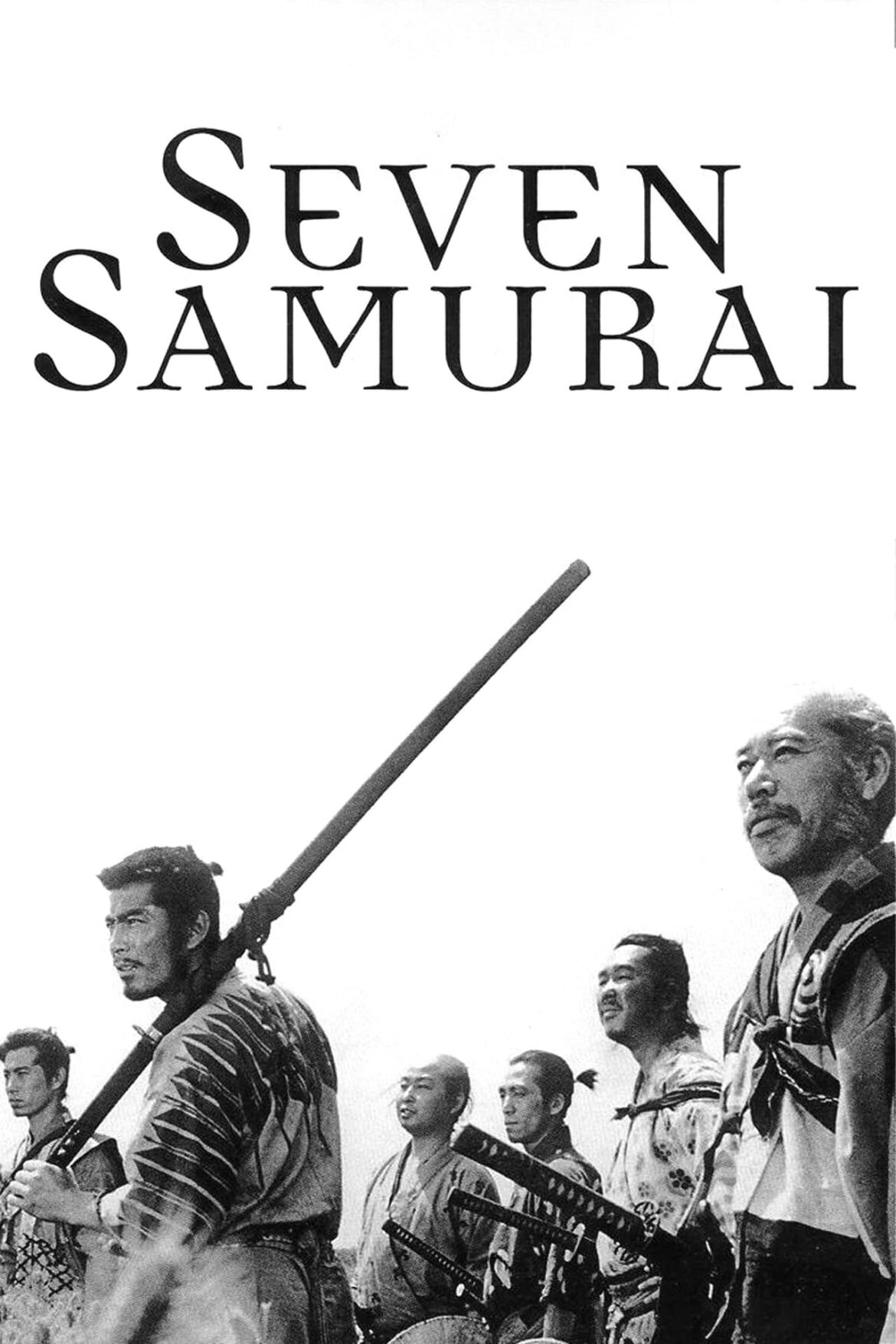Seven Samurai (1954) – Akira Kurosawa’s Epic Tale of Honor and Heroism
Type: Movie
Country: Japan
Genre: Action, Drama, Adventure
Release Date: April 26, 1954
Duration: 207 minutes
Director: Akira Kurosawa
Production Companies: Toho Company
Cast: Takashi Shimura, Toshiro Mifune, Yoshio Inaba, Seiji Miyaguchi, Minoru Chiaki, Daisuke Katō, Isao Kimura
Quick Review:
“Seven Samurai” (1954), directed by Akira Kurosawa, is a timeless masterpiece that stands as one of the greatest films in cinematic history. This Japanese epic masterfully blends action, drama, and adventure, delivering a compelling story of honor, sacrifice, and heroism. With its rich character development, innovative direction, and stunning cinematography, “Seven Samurai” continues to inspire filmmakers and captivate audiences worldwide.
Plot Summary:
Set in 16th-century Japan, “Seven Samurai” follows the story of a small farming village terrorized by a group of bandits. The villagers, desperate for protection, seek the help of samurai warriors. They find Kambei (Takashi Shimura), an experienced yet humble samurai, who agrees to help them. Kambei gathers six other samurai, each bringing unique skills and personalities to the group: Kikuchiyo (Toshiro Mifune), a fiery and eccentric ronin; Gorobei (Yoshio Inaba), a wise strategist; Kyuzo (Seiji Miyaguchi), a master swordsman; Heihachi (Minoru Chiaki), a good-humored and skilled fighter; Shichiroji (Daisuke Katō), Kambei’s old friend and loyal warrior; and Katsushiro (Isao Kimura), a young and inexperienced samurai eager to prove himself.
The samurai and villagers prepare for the impending bandit attack, building fortifications and training the villagers in basic defense. As they bond and develop mutual respect, the film explores themes of duty, sacrifice, and the warrior code. The climactic battle scenes are intense and meticulously choreographed, showcasing Kurosawa’s innovative use of multiple cameras and dynamic editing.
Characters and Performances:
- Takashi Shimura as Kambei: Shimura’s portrayal of Kambei is dignified and deeply human, embodying wisdom, leadership, and compassion. His performance anchors the film, providing a moral center for the story.
- Toshiro Mifune as Kikuchiyo: Mifune’s electrifying performance as the unpredictable and passionate Kikuchiyo adds a layer of complexity and humor to the film. His character’s growth and ultimate sacrifice are among the film’s most poignant elements.
- Yoshio Inaba as Gorobei: Inaba’s Gorobei is a calm and tactical mind, bringing strategic acumen to the group. His understated performance contrasts well with Mifune’s intensity.
- Seiji Miyaguchi as Kyuzo: Miyaguchi’s portrayal of the stoic and deadly Kyuzo is memorable for its precision and quiet strength. Kyuzo’s dedication to his craft and his serene demeanor make him a standout character.
- Minoru Chiaki as Heihachi: Chiaki provides comic relief and warmth as Heihachi, whose light-hearted nature and bravery endear him to both the samurai and the villagers.
- Daisuke Katō as Shichiroji: Katō’s Shichiroji is loyal and dependable, offering unwavering support to Kambei and the group. His presence reinforces the themes of camaraderie and trust.
- Isao Kimura as Katsushiro: Kimura’s Katsushiro is a young samurai with a deep admiration for his elders. His journey from naivety to maturity is well-captured, highlighting the generational aspect of the samurai tradition.
Direction and Cinematography:
Akira Kurosawa’s direction in “Seven Samurai” is nothing short of revolutionary. His innovative techniques, such as the use of telephoto lenses, weather elements to enhance mood, and the multi-camera setup for action scenes, set new standards for filmmaking. The meticulous attention to detail in every frame and Kurosawa’s ability to elicit powerful performances from his ensemble cast contribute to the film’s enduring impact.
The cinematography by Asakazu Nakai is visually stunning, capturing the beauty of the Japanese countryside and the intensity of the battle sequences. The use of deep focus, dynamic camera movements, and natural lighting enhances the film’s realism and immersive quality.
Music:
Fumio Hayasaka’s score for “Seven Samurai” perfectly complements the film’s epic scope and emotional depth. The music ranges from rousing battle themes to poignant, reflective pieces, underscoring the film’s dramatic moments and enriching its atmosphere.
Why It Endures:
“Seven Samurai” endures as a cinematic classic due to its universal themes, masterful storytelling, and technical brilliance. The film’s exploration of honor, sacrifice, and community resonates across cultures and eras. Its influence on subsequent films, including the Western adaptation “The Magnificent Seven,” attests to its lasting legacy.
The characters’ depth and the film’s realistic portrayal of their struggles and triumphs continue to engage audiences. Kurosawa’s innovative direction and the film’s groundbreaking techniques have inspired generations of filmmakers, ensuring that “Seven Samurai” remains a benchmark for excellence in cinema.
In Conclusion:
“Seven Samurai” (1954) is a cinematic landmark that combines thrilling action, rich character development, and profound themes. Directed by Akira Kurosawa and featuring stellar performances, particularly from Takashi Shimura and Toshiro Mifune, the film offers a timeless story of heroism and humanity. Its innovative direction and enduring impact make “Seven Samurai” a must-see masterpiece that continues to inspire and captivate.


